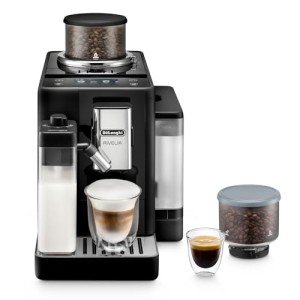5 Killer Quora Answers To Beans To Cup
페이지 정보
작성자 Mozelle 작성일 25-11-05 16:06 조회 3 댓글 0본문
From Beans to Cup: The Journey of Coffee
Coffee is more than just a beverage; it's a worldwide phenomenon that starts its journey from small farms to the cup you drink. Comprehending this journey not just deepens gratitude for the drink itself but also highlights the ecological, social, and economic elements included in coffee production. This post will guide the reader through the entire process, from the growing of coffee beans to the minute the abundant liquid hits your cup.
The Coffee Plant: Where everything Begins
The coffee journey starts with the coffee plant, mainly renowned for 2 main types: Arabica (Coffea arabica) and Robusta (Coffea canephora). Each has distinct attributes, from flavor profiles Best Automatic Bean To Cup Coffee Machine UK growing conditions.
| Coffee Species | Taste Notes | Caffeine Content | Growing Altitude |
|---|---|---|---|
| Arabica | Sweet, fruity, floral | Lower | 2,000 - 6,000 feet |
| Robusta | Strong, earthy, bitter | Greater | 600 - 3,600 feet |
The growing conditions for coffee are quite particular and involve elevation, climate, and soil quality.
Native Regions
Coffee originally comes from Ethiopia, where legend suggests it was discovered by a goatherd named Kaldi. Today, the most prominent coffee-growing areas consist of:
- Central & & South America (Colombia, Brazil, Guatemala)
- East Africa (Ethiopia, Kenya)
- Southeast Asia (Vietnam, Indonesia)
Cultivation of Coffee Beans
Gathering
The coffee growing process requires careful attention, particularly throughout the collecting stage. Here are representative methods:

- Hand-Picking: Preferred for high-quality Arabica beans, where only the ripest cherries are selected.
- Mechanical Harvesting: Commonly used for Robusta, allowing for efficiency but typically including unripe cherries.
| Harvesting Method | Pros | Cons |
|---|---|---|
| Hand-Picking | Quality control | Labor-intensive |
| Mechanical Harvesting | Faster and affordable | Lower quality |
Processing Coffee Cherries
When gathered, the coffee cherries need to be processed Bean To Cup Drip Coffee Machine draw out the beans. The 2 main techniques are:
- Wet Processing: Cherries are depulped, fermented, and cleaned. This method produces cleaner flavors.
- Dry Processing: Cherries are sun-dried and hulled. This leads Bean To Cup Drip Coffee Machine a stronger, more robust flavor.
Roasting: Transforming Beans into Aromatic Gold
Roasting is a crucial action that transforms green coffee beans into the aromatic delights that coffee fans love.
Coffee Roast Levels
Roasting can be categorized into different levels:
- Light Roast: Fruity and acidic, maintaining the majority of the Bean To Cup Cofee Machine's initial taste.
- Medium Roast: Balanced flavor with a mix of level of acidity and sweetness.
- Dark Roast: Bold, rich, and typically has a smoky flavor.
| Roast Level | Attributes | Flavor Profile |
|---|---|---|
| Light | Moderate level of acidity, fruity | Floral, berry, citrus |
| Medium | Balanced sweet taste | Caramel, nutty |
| Dark | Low level of acidity | Chocolate, smoky, bitter |
Developing Methods: Bringing It All Together
As soon as roasted, the coffee beans are ground and brewed. Various approaches impact extraction and tastes, leading to a multitude of developing alternatives, including:
- Drip Brew: The most common method, providing constant flavor.
- French Press: Offers rich, full-bodied coffee due to the longer high time.
- Espresso: For a concentrated shot, including high pressure and carefully ground coffee.
- Pour Over: Allows for more control over brewing time and temperature level.
| Brewing Method | Time | Flavor Profile |
|---|---|---|
| Drip Brew | 5-6 min | Clean, constant |
| French Press | 4-5 min | Full-bodied, robust |
| Espresso | 20-30 sec | Rich, concentrated |
| Put Over | 3-4 min | Bright, nuanced tastes |
From Farm to Table: Sustainability Matters
The coffee industry deals with numerous difficulties, consisting of environment change, logging, and reasonable trade practices. Lots of companies are working towards more sustainable practices:
- Fair Trade: Ensures farmers receive reasonable salaries and promotes sustainable farming.
- Shade-Grown Coffee: Grown under trees to protect the community.
- Organic Coffee: Grown without artificial fertilizers or pesticides.
Frequently Asked Questions (FAQs)
1. What is the difference between Arabica and Robusta?
Arabica coffee generally has a sweeter, more complicated taste, while Robusta tends to be more powerful and more bitter. Arabica is also lower in caffeine.
2. How should coffee beans be kept?
To maintain freshness, store coffee beans in an airtight container away from light, heat, and moisture.
3. What developing approach produces the strongest coffee?
Espresso is frequently considered as among the greatest brewing approaches due to the high pressure used, leading to a concentrated shot of coffee.

4. Can coffee be grown anywhere?
While coffee can be grown in numerous areas, it grows in particular climates, especially in the "coffee belt," where temperatures stay moderate and consistent.
5. What are some indications of quality coffee?
Search for beans with an uniform color, no cracks, and an abundant fragrance. Top quality coffee will have unique taste notes depending on their origin and processing method.
Determining the journey of coffee from beans to cup exposes a complicated interaction of agriculture, trade, and cooking art. As millions enjoy this valued beverage daily, an understanding of its journey engenders a deeper gratitude for the intricacies involved. Efforts towards sustainability and ethical sourcing mean that every cup not only warms your spirit however likewise supports a more accountable coffee culture. So the next time you enjoy that aromatic brew, take a minute to show on the journey it has made from farm to cup.
- 이전글 Play Exciting Slot Games free of charge Online in Thailand
- 다음글 The Thrilling World of Online Arcade Games: A Nostalgic Journey into Digital Fun
댓글목록 0
등록된 댓글이 없습니다.



